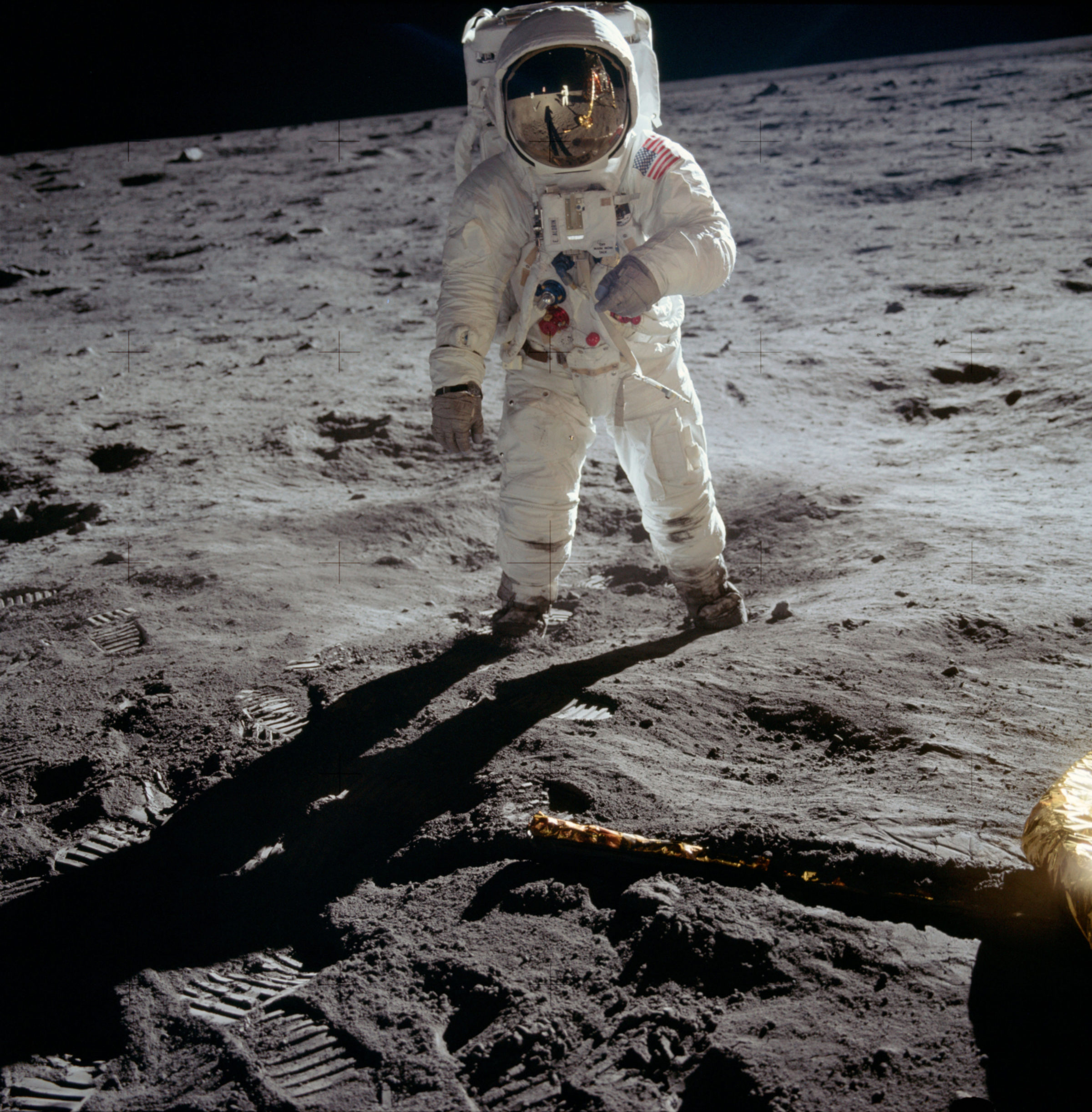Beyond Apollo: Where Next in Space?
Forty years ago, humankind visited another world for the first time. It was an incredible moment for one of us—stepping off a ladder onto the Moon with Neil Armstrong, we two frail humans taking the first steps on that distant shore. It was also an amazing experience for command module pilot Michael Collins—who watched, breathlessly, along with about half a billion other people on home planet Earth.
Apollo 11 was heralded as the beginning of a new Space Age. Horizons appeared limitless, and those first crisp footprints in Moon dust were to be a precursor of journeys to other, more distant worlds. So they were—for our robotic emissaries.
But 40 years later, the Moon is still the farthest outward destination to which humans have ventured. When will we go farther? And who will go—Americans, Russians, Europeans, or astronauts from new spacefaring nations such as China, India, and Japan?

It is now time for humans to go beyond the Moon. Mars is the next compelling goal for human exploration. It is the only planet in our solar system where humans could land and perhaps someday settle. Mars has oxygen and water accessible to future explorers, and its surface shows signs of ancient liquid water, suggesting an environment that may have given rise to life in the planet's distant history.
But we should not make the journey in a single step.
Landing men on the Moon was one of the most complex and ambitious endeavors ever undertaken, and it took three big steps: Mercury, Gemini, and, finally, Apollo. Landing humans on Mars will be more difficult still, and taking us beyond the Moon and into the solar system will require a systematic, step-by-step approach. Fortunately, we are poised to take the next steps.
The impetus behind the Apollo program was not only a quest for new horizons but also a desire for national prestige. The Moon was the finish line in a space race between the United States and the Soviet Union. America won that race and should not try to re-run it against other nations.
Our world has changed. Peaceful international cooperation now pervades space exploration, from the operation of the International Space Station to the exploration of the solar system, with such organizations as NASA and the European Space Agency (ESA) teaming for the Cassini-Huygens mission to Saturn and its moon Titan. America can return to the Moon with other nations while at the same time setting sights on new goals.
As the United States retires the space shuttle, it needs to develop new rocket capability, not only to replace the shuttle but also to take humans into interplanetary space. There are milestones beyond the Moon, just as the Mercury and Gemini programs represented milestones on the way there. Those milestones might include reaching a Sun-Earth "Lagrangian" point (of gravitational stability) for starting our venture to interplanetary space, near-Earth asteroids, or the Martian moons Phobos and Deimos. Finally, there is Mars itself.
European and Asian nations are now developing their capabilities to reach the Moon. America can help make that endeavor an integrated international venture. It can lead the way in building an international space exploration team, a peaceful technological challenge that will captivate the entire world. The political interest and support will be far greater for such a worldwide program of robotic and human missions taking us to the Moon and on to Mars than it would be for such an endeavor undertaken by one nation alone.
In a way, we have already started. Both the Japanese and the Chinese recently completed successful orbiter missions at the Moon and are planning their first landers. India also has an orbiter there and is planning future missions. At the Red Planet, NASA's Spirit and Opportunity rovers still explore the Martian surface while Mars Reconnaissance Orbiter observes from space. ESA's Mars Express spacecraft has been sending data from Mars since 2003. Russia and China are launching a joint Mars mission in fall 2009 with a Chinese Yinghuo-1 satellite and the Russian Phobos-Grunt lander.
In short, the nations of Earth are already at work on the necessary precursor steps—building their national capabilities and working together on more ambitious ventures. NASA and ESA have already announced that future landers on Mars must be international. Imagine what we could do if all missions leading to Mars were coordinated and executed as part of an integrated program, designed to achieve the ultimate goal of settling humans there. Can we evolve that far—from space race to space partners—in less than two generations?
Yes, we can. If the world launches a cooperative effort, humans might set foot on Martian soil within 25 years, instead of having to wait another 40 years or more. In fact, if we start now, humans could take their first new steps beyond Earth orbit within a decade.
America's lunar program was originally undertaken to showcase one country's engineering achievements, but the Apollo 11 Moon landing has come to represent the spirit of exploration in all of us. Mars beckons. Let's answer its call together.
The Time is Now.
As a Planetary Defender, you’re part of our mission to decrease the risk of Earth being hit by an asteroid or comet.
Donate TodayThe Planetary Report • July/August
Help advance space science and exploration! Become a member of The Planetary Society and you'll receive the full PDF and print versions of The Planetary Report.


 Explore Worlds
Explore Worlds Find Life
Find Life Defend Earth
Defend Earth


